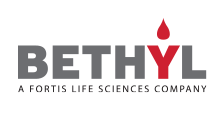Rabbit anti-ATR Antibody Affinity Purified

Product Details
Specifications
The epitope recognized by A300-137A maps to a region between residues 400 and 450 of human Ataxia Telangiectasia and Rad3-related using the numbering given in entry NP_001175.1 (GeneID 545).
Immunoglobulin concentration was determined using Beer’s Law where 1mg/mL IgG has an A280 of 1.4. Antibody was affinity purified using an epitope specific to ATR immobilized on solid support.
The epitope recognized by A300-137A-T maps to a region between residues 400 and 450 of human Ataxia Telangiectasia and Rad3-related using the numbering given in entry NP_001175.1 (GeneID 545).
Additional Product Information
ATR (ATM and Rad3 related) is closely related to ATM (Ataxia telangiectasia, mutated) and is a member of the phosphatidylinositol 3 kinase (PI-3) family that is an early sensor of DNA damage. ATR is a serine-threonine kinase that reacts to UV damage and interruptions in replication. ATR may be able to sense DNA damage through interaction with Rad17 and 1as well as components of nucleosome remodeling complexes. In response to DNA damage, ATR has been shown to phosphorylate a multitude of substrates which include BRCA1, p53, Chk2, Rad 17, and E2F transcription factor 1.
Alternate Names
ataxia telangiectasia and Rad3-related protein; FCTCS; FRAP-related protein 1; FRAP-related protein-1; FRP1; MEC1; MEC1, mitosis entry checkpoint 1, homolog; SCKL; SCKL1; serine/threonine-protein kinase ATR
Applications
All western blot analysis is performed using 5% Milk-TBST for blocking and as antibody diluent. Primary antibody is incubated overnight.
Western blots of cell lysates are performed using Goat anti-Rabbit IgG Heavy and Light Chain Antibody (Cat. No. A120-101P).
Western blots of immunoprecipitates are performed using Goat anti-Rabbit Light Chain HRP Conjugate (Cat. No. A120-113P) with 5% Normal Pig Serum (Cat. No. S100-020) added to the blocking buffer.
